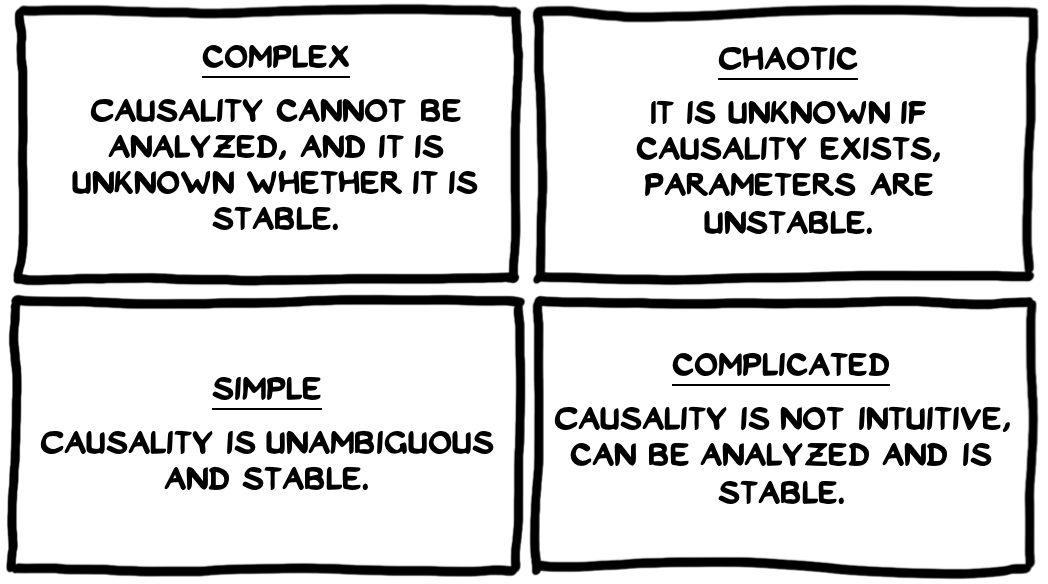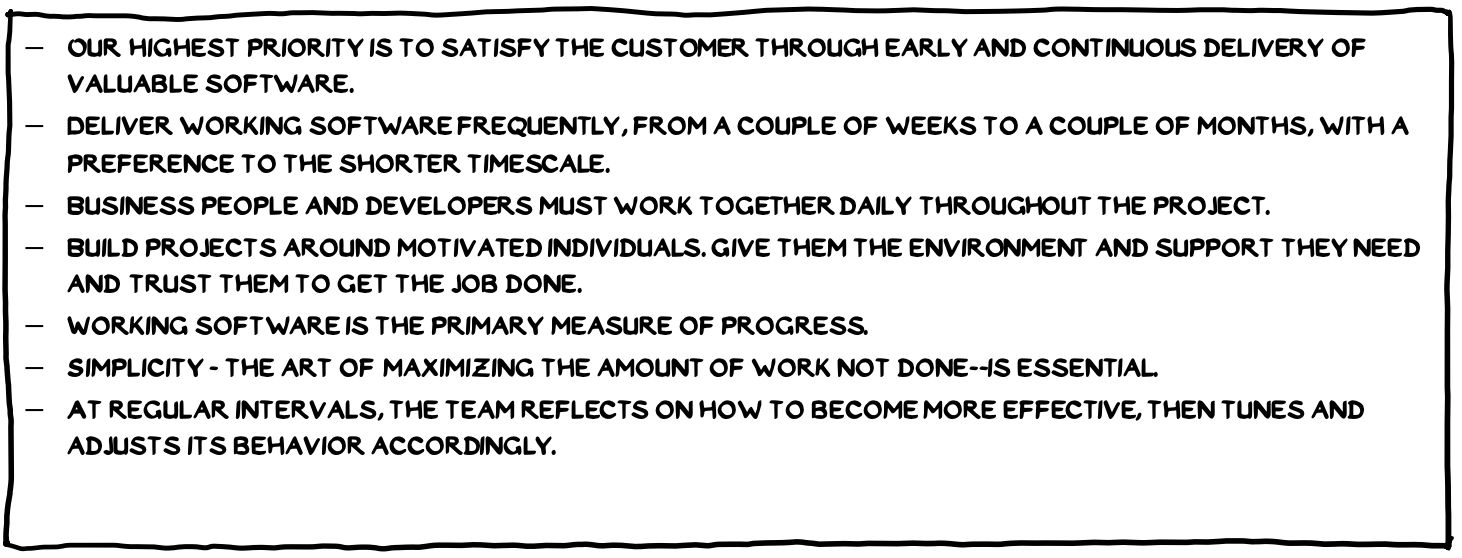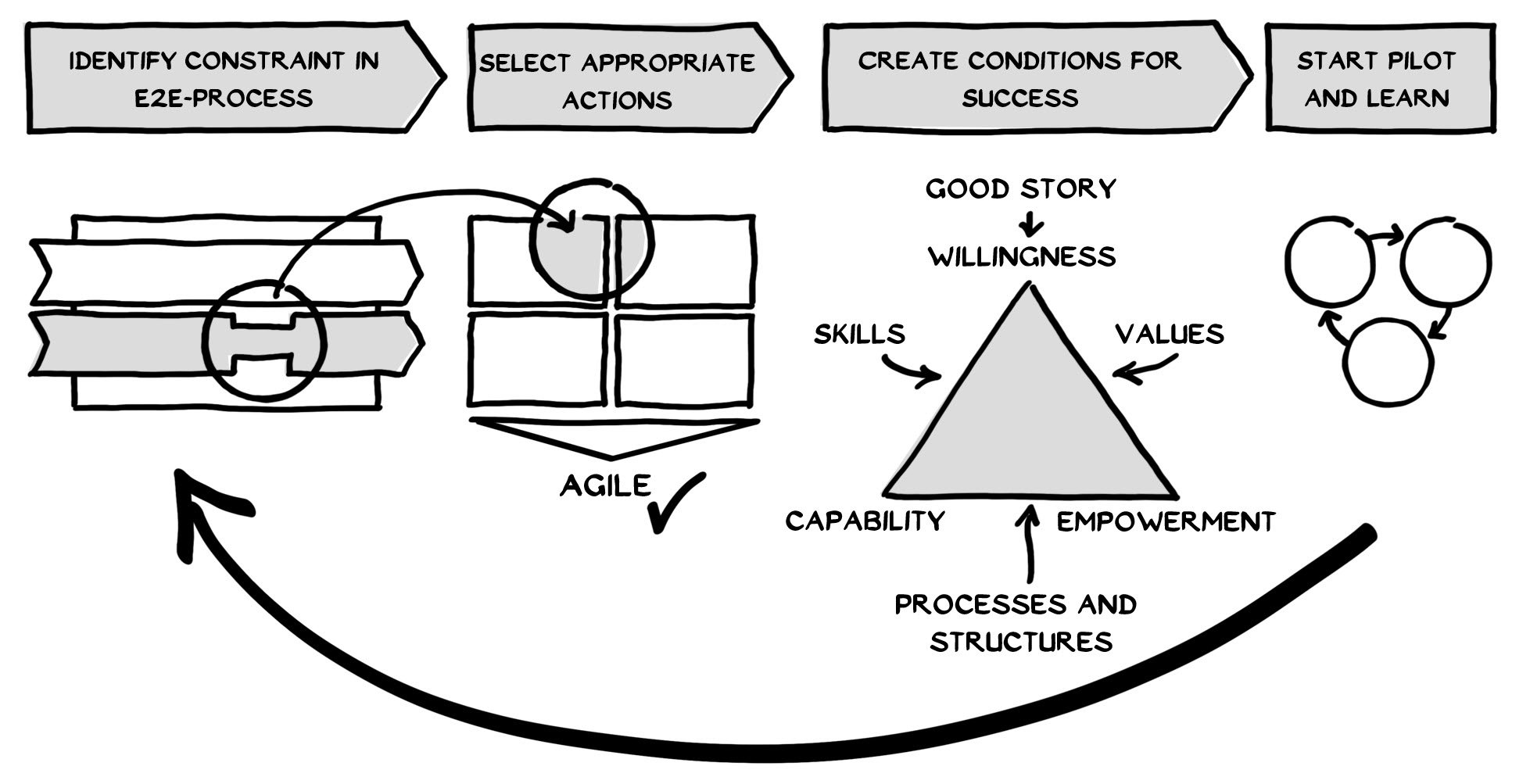
Agility without stability
is a waste of energy
In light of growing volatility, uncertainty, complexity and ambiguity it is no longer the question whether agile working methods create value, but rather how and under what circumstances this value can be best generated. In this assessment we envisioned a combustion engine: a key design feature of the engine, is that both the cylinders and the pistons are made of stable material. If either are unstable, the resulting transfer of power from the explosion of the air-gas-mixture to the crankshaft would fail either partially or entirely. The same principle applies to companies: agile working methods realese energy. In order to conserve and redirect this energy, stable and reliable mechanisms and processes need to be in place to channel the energy in favour of corporate targets.
Along with the topic of digitalization, agility remains a frequently used keyword. For the last decade, Agile – despite its origins appearing as long ago as 1970-, Kanban and Scrum have been regarded as popular tools. Reliable numbers, data and facts regarding the reach, can primarily be obtained from instructors. A leading Scrum training organization, for instance, claims to have certified more than 750,000 people in Scrum roles to date. Thus, the methodology, including the way of working and its philosophy, should be widespread and the goals that companies aimed to achieve with the implementation of agile working should have been reached. Headlines such as ‘we are going agile’ are not uncommon – measurable improvements in flexibility, speed as well as customer and employee satisfaction, on the other hand, are less frequently reported – at least in the case of large and established enterprises. In contrast to that, start-ups, creative agencies and digital garages, celebrate and report such successes, regardless of whether they act independently or as an encapsulated part of a larger company. The overall picture is therefore quite heterogenous. In order to identify patterns, we raised the following questions:
- What is the correct situation for implementing agile working methods and at what level should the implementation occur?
- What are the key requirements for creating an agile environment?
- How do I manage agility?
The correct use case
The appropriate use of the agile methodology in a company cannot be calculated using a formula as it may vary over time. Companies may therefore under or over utilize agility when implementing it i.e. either wanting to make all working methods agile or only introducing the methodology to individual, particularly important projects. Either way, neither leads to success. In order to identify possible applications, it is worthwhile assigning the different issues that the overall organization faces in its end-to-end value stream to one of four clusters.

Illustration: Clusters for applications
Let‘s have a closer look at the individual clusters:
Simple: Simple issues are characterized by the fact that cause and effect relationships are understood and stable. We are often familiar with best practice approaches on how these situations can be solved and improved. Archiving documents or optimizing first response call handling belong to this field of application.
Complicated: In our day-to-day work, complicated tasks are abundant and differ from simple tasks as the solutions are not intuitive. Finding the correct approach, requires an elaborate search and analysis for cause and effect relationships. Shortening the time in which IT tickets are solved or optimizing chemical reactions for use in mass production, are examples of such complicated tasks.
Complex: The number of complex problems is growing; these problems arise due to the VUCA-Environment1 amongst other things and are considerably harder to address than complicated tasks. Basic patterns of cause and effect can only be observed after the fact or in experiments, not knowing if it is possible to draw stable assumptions for the future from them. In this respect, experiments can only provide clues for solutions. The development of a new pension product without knowledge of future customer requirements or regulations would be regarded as a complex task.
Chaotic: We rarely encounter chaotic tasks. These are characterized by the fact that it is unknown whether there is a cause effect relationship and whether it can be repeated. The parameters are unstable, potentially even unknown and make it difficult to develop a sufficiently reliable solution.
The medium-term weather forecast is an example of a chaotic task, as is predicting profits from stock speculation. In general, agile methods can be applied to all four situations, but the degree of effectiveness differs. The increase in effectiveness when using agile practices, methods or organizational models is more noticeable when causalities are unknown.If you decide that agility is your method of choice to solve problems, you must be aware that there is the possibility of over or under steering. Both can impact the achievement of targets negatively. In the event of oversteering, even the simplest tasks are overloaded with agile methods and/or practices which may lead to duplication of work or longer lead times. An example from everyday life would be to just brush the molars at the bottom left, then rinse and evaluate whether the teeth are clean enough to leave the house yet. The assessment would generate a negative result, followed by an iteration with the molars on the bottom right – brush, rinse, evaluate. Following multiple iterations, our teeth would be clean, and we would be ready to go. Unfortunately, this type of process is likely to take a lot longer and consume considerably more water and toothpaste. In everyday work, such an approach can lead to frustration with regards to the meaningfulness that cannot be answered satisfactorily: why would I use iterations? What benefit does an iterative approach generate?
Understeering can be labeled as ‘too little agility’. The initial impulse, that results in understeering, is usually the desire for quick and visible results. Therefore, the focus shifts to quickly implementable practices that are then integrated into everyday work without further challenge. You can probably find a concrete example in the back of your mind, where a stand-up meeting, as an agile practice, was introduced, but the content and procedure within the meeting remained the same. After four weeks, the meeting was no longer standing, but had returned to a sitting fashion and lasted longer than the originally scheduled 30 minutes. A pattern can be identified here: a few executives and employees are trained in individual methods such as Scrum and are expected to produce quick results applying their newly gained know-how. Firstly, the underlying values and principles cannot be conveyed as quickly, and secondly, their integration into existing structures is an even lengthier process. In addition to the knowledge of methods and tools, it takes the willingness to change established paradigms, processes and structures within the company.
An example: You have formed agile teams for product development with a Scrum Master and Product Owner and yet the projects are not completed faster than before. The team members may not have been able to devote their full time and attention to the project because they still had to complete tasks outside of it or the sprint backlog is constantly being expanded with additional tasks and re-prioritized. Two essential values of Scrum, namely Focus and Commitment, are thereby violated and result in long, now potentially even longer, lead times and additional frustration among those involved. Prerequisites for success
In order to prevent over or under steering it is necessary to build a common understanding as a prerequisite for success. Common understanding includes agile values – clear and basic assumptions on our definition of ‘good’ – and principles we derive from this understanding. Principles are not to be understood as rules, as they do not present do’s and don’ts, rather they serve as a guideline for one’s own behavior, that implicitly excludes undesired behavior. The agile manifesto2 contains 4 values and twelve associated principles, which present loosely defined desired behaviors.

Figure: Values from the agile manifesto

Figure: Principles from the agile manifesto
The specification depends on the respective team, as only the team can determine how much agility and in what form is appropriate. Therefore, another requirement is the ability to change constantly. This includes the courage to set up and test a hypothesis and the informed and reflected handling of errors.
Management
Steering agility requires not only the self-understanding of the organization or individual units themselves, but also specifically the adjustment of control-systems, starting with key indicators that apply to entire teams instead of individuals, up to steering committees that have to redefine their tasks (and also their reason for being) through self-organized teams and decentralized decisions. Ultimately, however, less control is required in the conventional sense, but more providing a support function, enabling constant reflection on one's own actions.
Conclusion
Agility presents a great opportunity to adapt behavior to current framework conditions. An introduction to agile working methods should, however, take place in a suitable situation with the optimum depth and not just scratch the agile surface. Values and principles must be set and actively lived for one’s own organization. However, this also means that there is no blueprint for the implementation and increase of agility in a company, instead there are only examples of what worked in other companies with past framework conditions. However, at least a proven sequence of activities can be observed, which ensures that all relevant elements are considered and defined:

Illustration: E2E process for piloting with Agile
Identifying the bottleneck in the End-to-End Value Stream in order to choose the appropriate approach. Provided that agile is the chosen means to eliminate the bottleneck, it will be necessary to create the corresponding requirements for success – in addition to objectives and individual skills, values and principles are equally relevant as are adaptable processes and structures. Then a pilot should be initiated quickly, to test initial assumptions and to learn from the procedure and the corresponding results in order to start again.
2agilemanifesto.org, 2001
More
Organisational Capabilities
- Increase efficiency
- Increase effectiveness
- Promote innovation
- Manage change
- Manage complexity
- Increase agility
- Promote collaboration
Consulting Cases
Choice from Academy
- Lean Six Sigma Black Belt
- Lean Six Sigma Green Belt
- Lean Six Sigma Green Belt to Black Belt
- Six Sigma Yellow Belt
- Agile for Hardware
- Agile for Non-IT People
- Agile Innovation Manager
- Agile Project Management
- Business Excellence for Executives
- Change Canvas
- CIT Master
- CIT Practitioner
- Digitalization Excellence for Executives
- Lean Transformation Belt